Edvard Munch’s expressionist painting “The Scream” is one of the most recognizable works of art today. Multiple versions were created using pastel, oils and tempra between 1893 and 1910. There were even intentions to quickly create more reproductions of the image when Munch created a lithograph of the piece in 1895.
Popular artist, Andy Warhol, even produced silk prints of “The Scream” in 1983-1984 in order to desacralize the art even further by mass-producing it for the pop-conscious and high-consumerist fad culture of the 1980s. The iconic face of the anguished foreground character in “The Scream” was undoubtedly injected into the minds of a whole new generation of moviegoers when Wes Craven’s aptly names “Scream” franchise hit cinemas in 1996. The Ghostface antagonist in “Scream” wears a mask that was influenced by a novelty mask created in the 1991-1992 Halloween season by Fun World employee Brigitte Sleiertin, which in turn referenced Munch’s painting.
The costume is the highest sold and worn costume in the United States. Due to its rapidly growing popularity, by the time Scream 3 hit theatres in 2000, the mask was referenced in many commercials and other television shows shortly after–Beverly Hills 90210, Dawson’s Creek, Sopranos, Simpsons and Robot Chicken to name a few–cementing the visual even more firmly in the minds of the general public.
The Doctor Who character, named quite anonymously “The Silence”, appears in the 2011 episode “The Impossible Astronaut” and bares a striking resemblance to Munch’s character, which The Silence was partially based on.
It’s no surprise that geek culture has latched on to the popularity of this memorable work of art to create derivative works depicting popular fictional characters for yet another generation.
Below are five mashup examples–only a sampling of what has turned into a well-established troupe online. It’s a safe bet for artists to use Edvard Munch’s “The Scream” as the subject of their parody if their intention is for fans to have an immediate awareness of the reference, even if they know nothing of the original fine art.
They may not capture the intensity of the colours or the emotion in the lines that Munch intended, but there remains a suggestive subtext to the parodies that adds a layer to the narrative–at least for the geek-inclined–whether intended or not. There lies the genius intrinsic to the composition of the original work of art.
This design, titled “The Star Scream” by artist “ninjaink” depicts the Decepticon, Star Scream, in the foreground while the robot-god and universe killer, Unicorn, hovers over Cybertron.
This art piece by artist “ben6835” depicts The Joker in the foreground with a scattered set of aces as Batman, The Dark Knight, approaches; Gotham City is silhouetted in the cityscape with the Bat Signal looming in the blood-red sky.
Artist “ben6835” offers another version of the parody, this time depicting evil sorcerer, Skeletor, in the foreground agonizing over the recently empowered Adam as he transforms into He-Man, his nemesis.
In this parody, artist “meowza” implants Homer Simpson into a simplified scene based on Munch’s painting. There was no title attached to this piece, but it’s hard to not assume its called anything other than “The Argh!”.
Lastly, we have here “The Meep” by artist James Hance, featuring the Muppet, Meep, as he goes through the “meep meep meep” motions of his trademark high-anxiety panic attack.
Image Credits: Ghostface Image: [BeyondHollywood.com] The Silence Image: [Webphemera.com] The Star Scream by “ninjaink”: [DeviantArt.org] The Joker Scream by “ben6835”: [Flickr.com] The Rebel Scream by “ben6835:” [Flickr.com] The Homer Scream by “meowza”: [Aviary.com] The Meep by James Hance: [JamesHance.com]
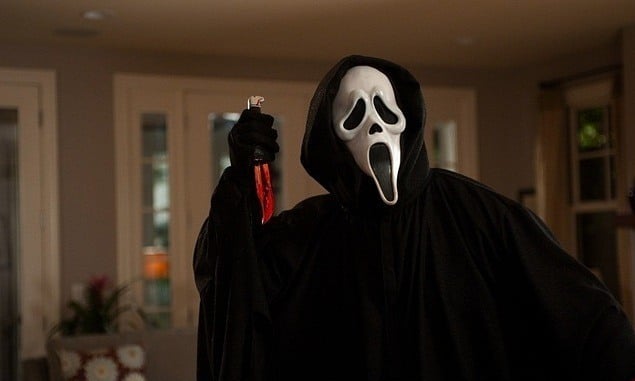
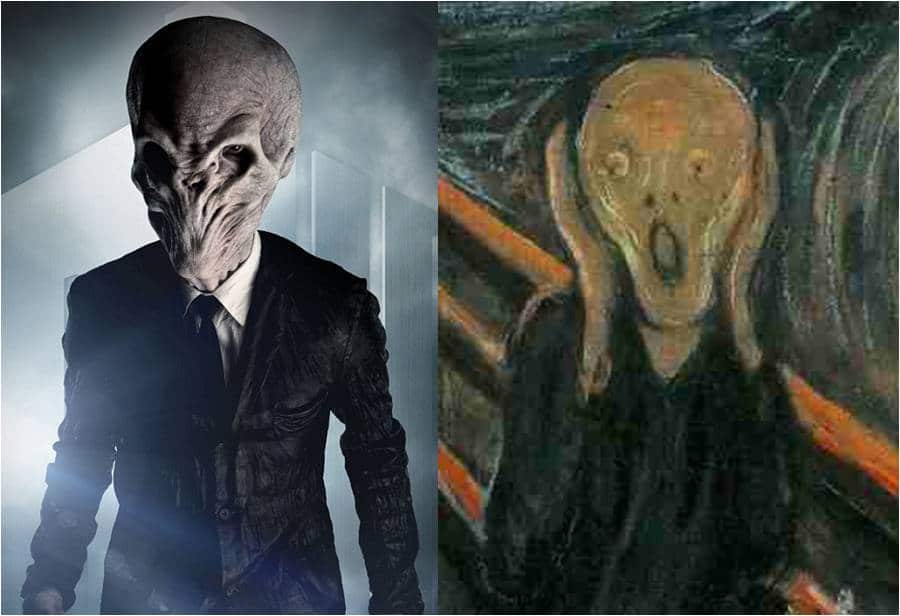
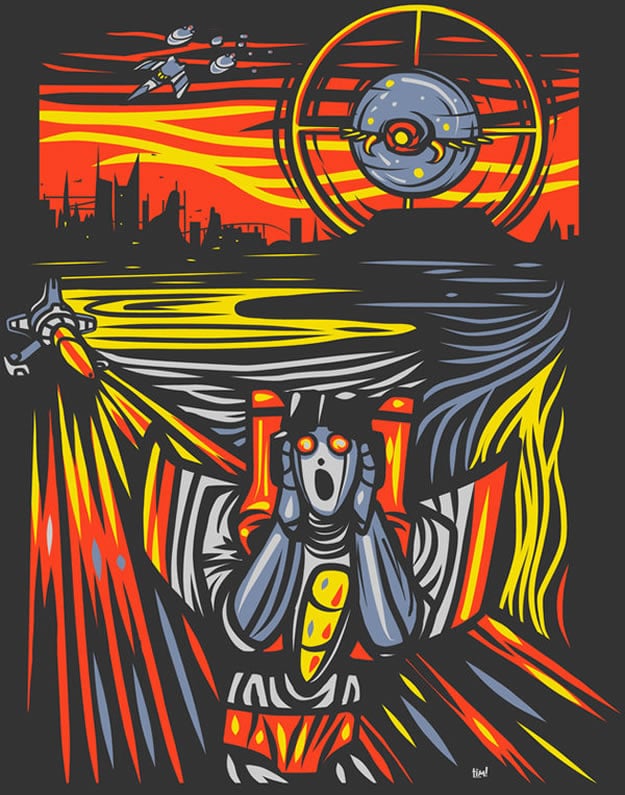
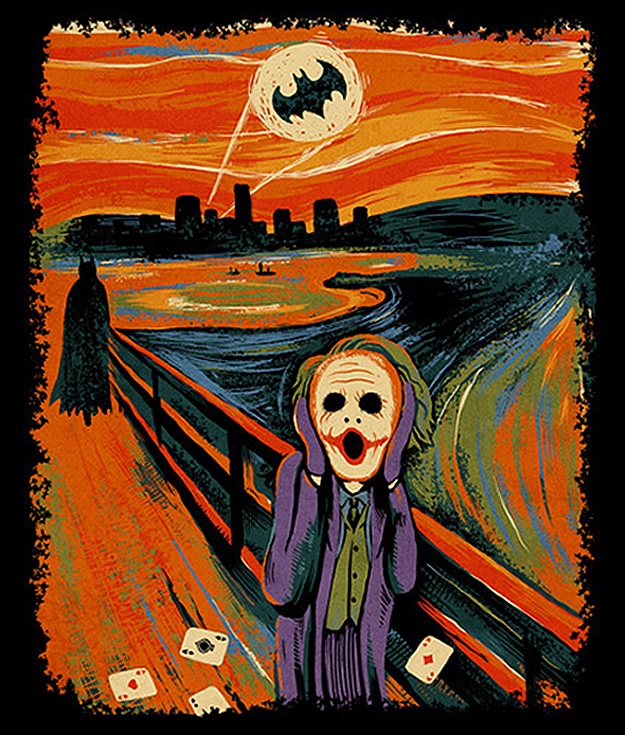
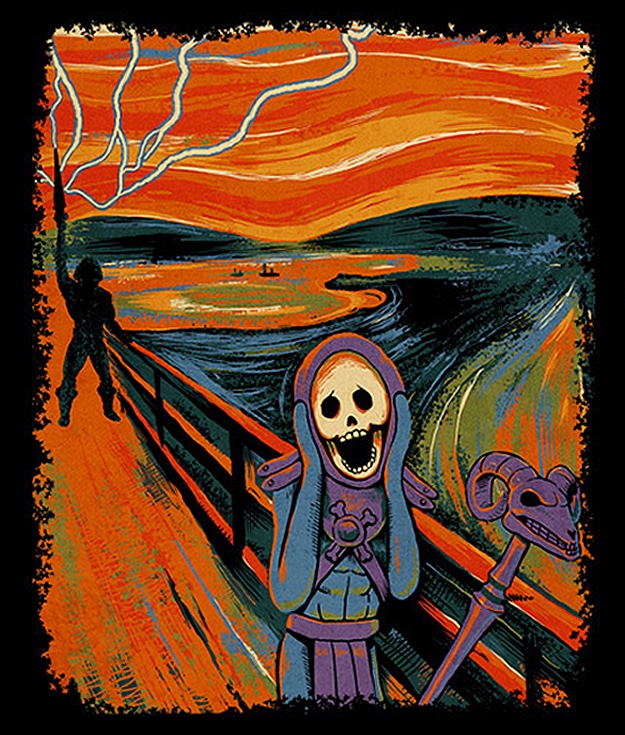
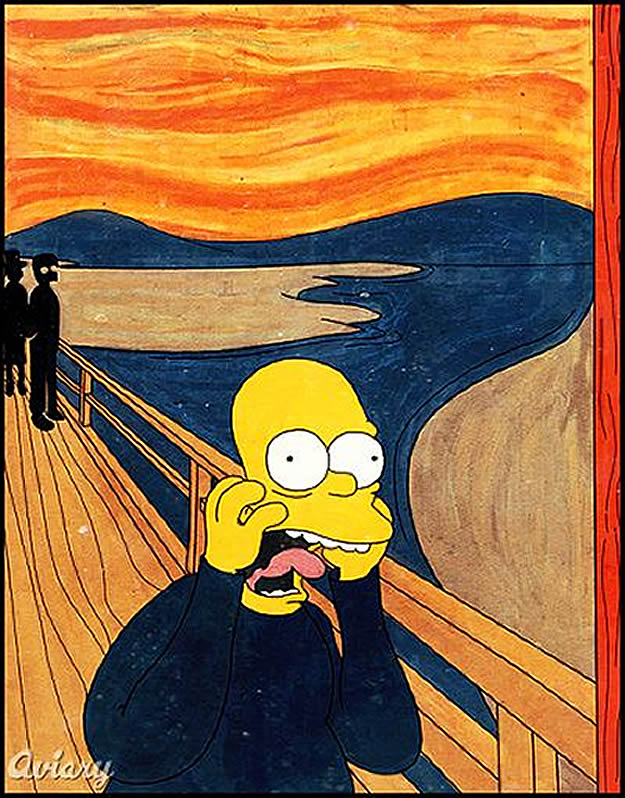
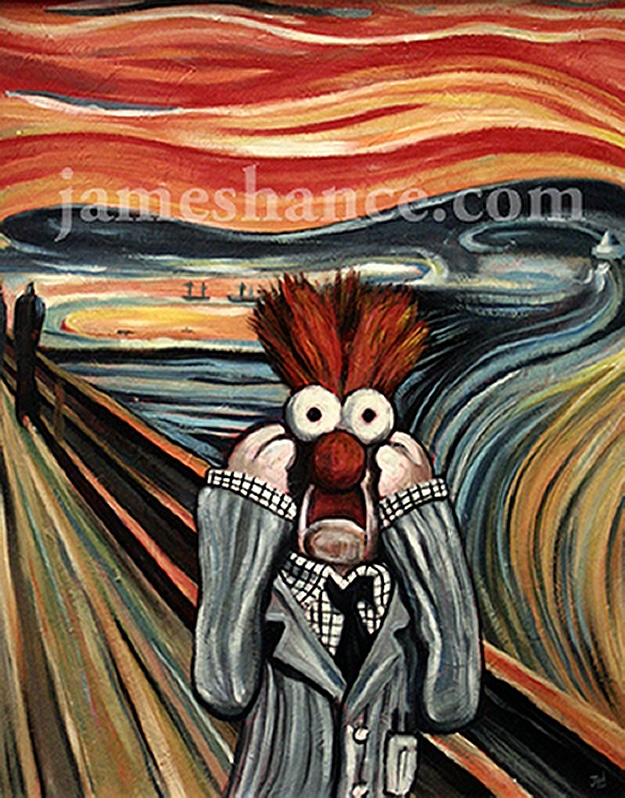
COMMENTS